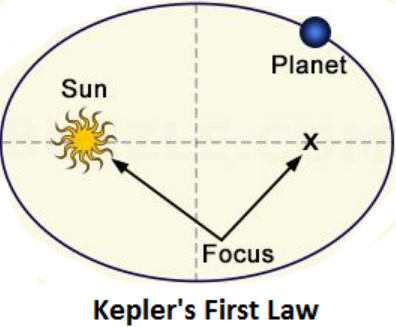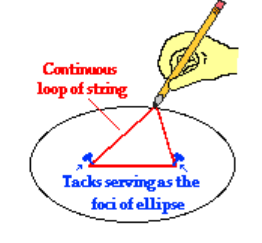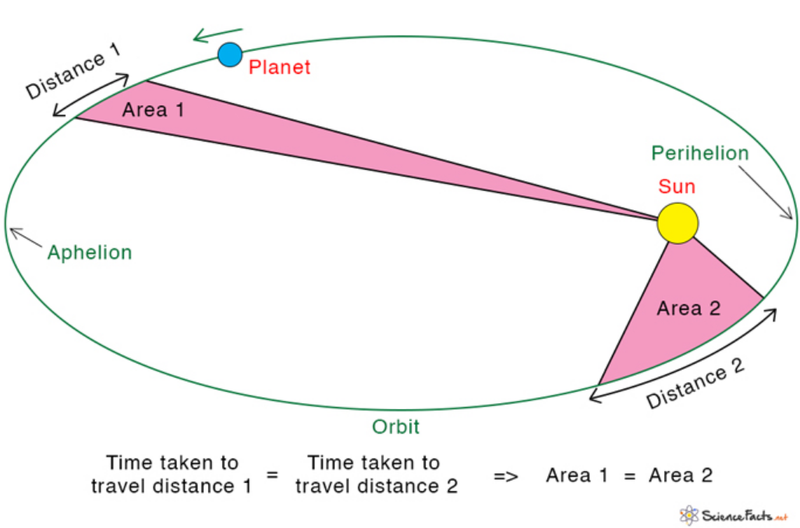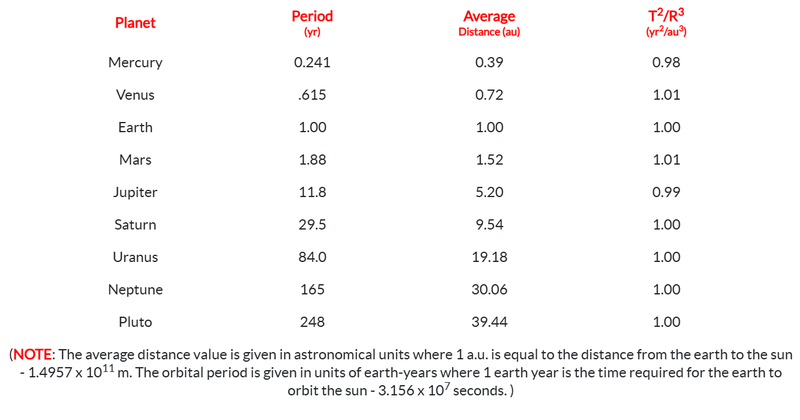Kelpler's Laws
- German astronomer and mathematician (and more) Johannes Kepler created 3 laws used to describe planetary motion.
- You can play around with Kelper's laws in this simulation.
First Law
- Each planet moves in an ellipse with the Sun at one focus.
- A focus is a point which the orbit goes around.
- Generally an orbit has two focuses, with the sun being one of them, and the other focus being an imaginary spot on the other side of the orbit.

- The focal points, or foci, can be imagined as two pins where a loose string is tied.
- A pencil is used to draw shape where the string is pulled taut.
- The resulting shape would be an ellipsis.

- A circle can actually be drawn in the same way, except the two foci would be at the same spot!
Second Law
- The line connecting a planet and the sun sweeps out an equal area in equal times.

- From this we can see that the further a planet is from the sun, the less area it sweeps out in the same amount of time.
- This means that it is travelling slower the further away it is, and faster the closer it is to the sun.
Third Law
- The radius of a planet's orbital time period, T, is proportional to the cube of its average orbital radius, R.

- This means that the ratio R³/T² for any planet is equal to the ratio for any other planet, as they would both be equal to the same constant.

- From the chart above, we can see that the constant is the same, if not approximately the same, for all the planets in the solar system.
- Kepler's law can be used for all satellites orbiting a planet or planets orbiting stars.
Sources
https://www.sciencefacts.net/keplers-second-law.html
https://www.physicsclassroom.com/class/circles/Lesson-4/Kepler-s-Three-Laws